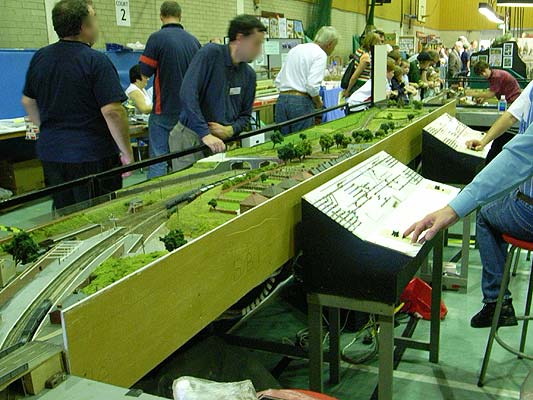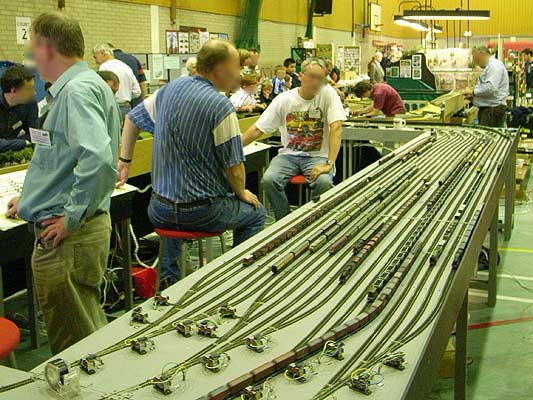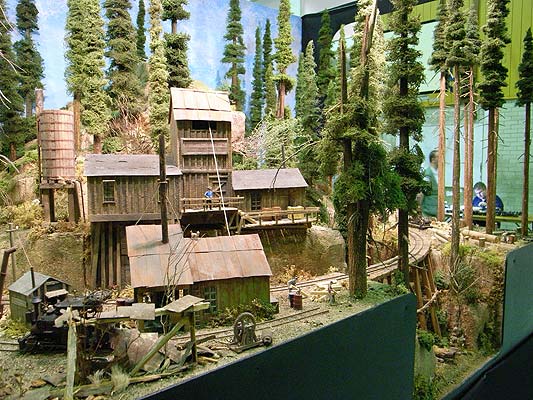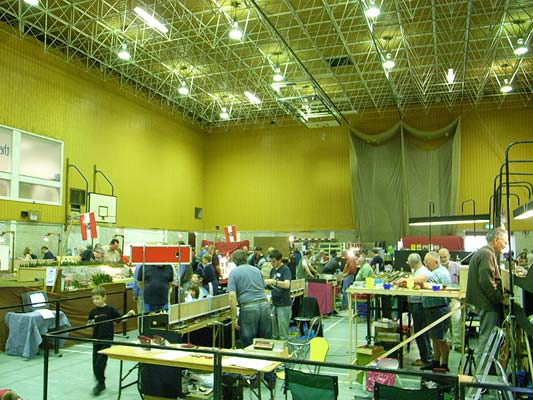Last weekend saw Jack and I take a trip to the Western Modern Railway Society‘s West Of London Model Railway Exhibition in South Ruislip. It’s been 18 years or more since I’ve been to a model railway exhibition. I wanted to see what it was like now.

First observation: Nothing has changed. The technology is the same as it was–the trains are controlled with a voltage knob wired to the track, and the points are controlled by switches directly connected. I guess I was expecting some involvement of computers, or some automation… but maybe that’s not the point. I did see two chaps operating trains on the same layout, communicating only through on-layout signals, just as regular train operators would. It’s apparently very absorbing, operating the controls.
I don’t know whether this was true when I last went to an exhibition, but the technology was surprisingly unreliable. Trains often needed assistance to get over a rough patch in the track, especially at slow speeds, and people were often doing small amounts of maintenance. The scenery, on the other hand, sometimes looked neglected (on some layouts).
…but maybe that’s to do with the two types of layout we saw. Some layouts were all about having a place to run your model trains. The scenery was incidental, and there a number of layouts had a large sidings to store all the locomotives, carriages and freight.

The second type of layout was all about the model. The adverts in the background would be in character, the trees and landscape were well decorated, and the whole layout would be accompanied by a narrative of what sort of industry was assumed to be nearby, the purpose of the particular junction, the time period, and so on.

This model of the Canadian Rockies was particularly impressive, as were the tricks the maker used to create good-looking trees and ground. The whole layout was created in 10 weeks, but the maker generally made only one layout every 3 years. I don’t know how typical that is.
I was surprised not to see any futuristic trains. There was a small layout of Croydon Tramlink and a single layout which included diesel and electric era trains, but otherwise locomotives dominated. But where was the TGV, or a maglev? Perhaps this is simply because layouts with more points are more exciting, and futuristic, high speed trains don’t work like that.
One last point: The show was half layouts and half stands, where the stands combined tool shows, magazine sellers, and individuals making and selling trees or constructed kit locomotives. It was good to see the combination of larger and smaller sellers.

In summary, it was fascinating to go an exhibition by hobbyist model-makers, especially ones who have a small industry supporting them, taking mass produced objects (houses and trains) and completing their look for their own layout. But it was disappointing to see the lack of change over the past two decades–though I don’t know how true this is, given my hazy memories and this very small sample size.
What I got most out of the visit was an idea of the various motivations of people in the community. Some like the agency of controlling the train, some like modelling, some are selling, some have train collections they’d like to see on the tracks (but no space for a layout). Without all these people gathered around the single hobby, it wouldn’t do well. But it does make me wonder what other hobbies people would gather around, and what a model railway hobby would look like using modern technology and an internet sensibility. I have a few ideas.